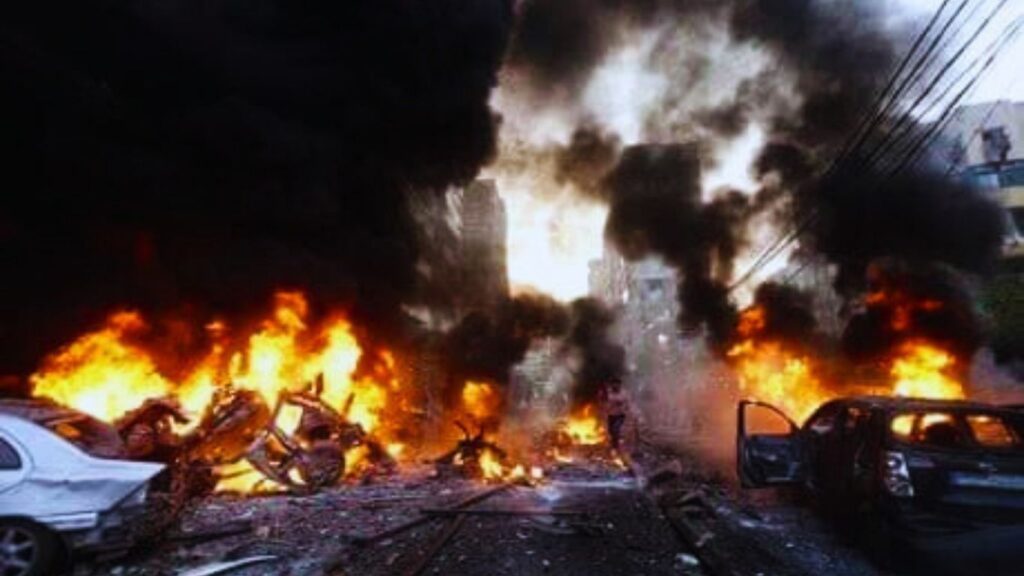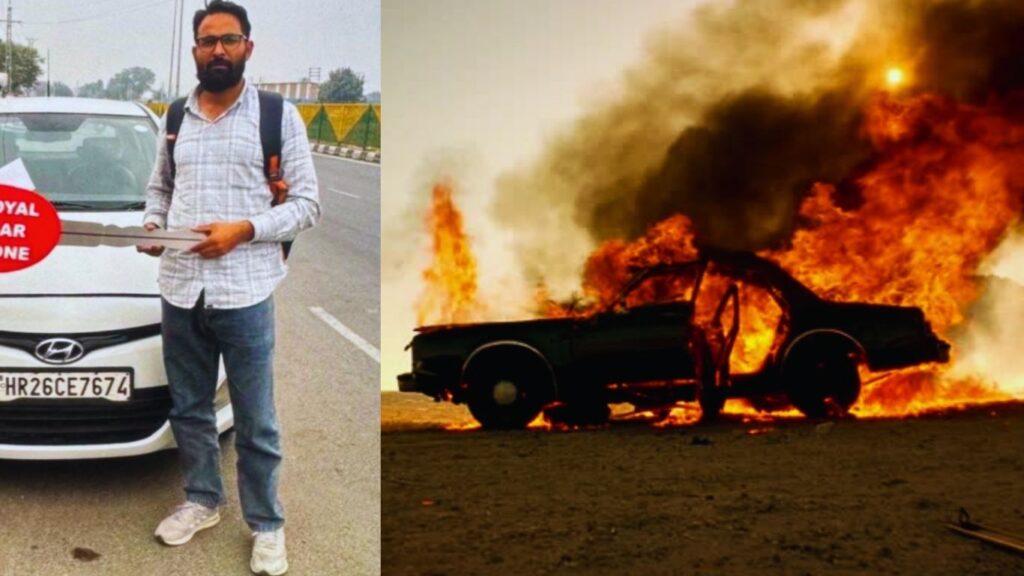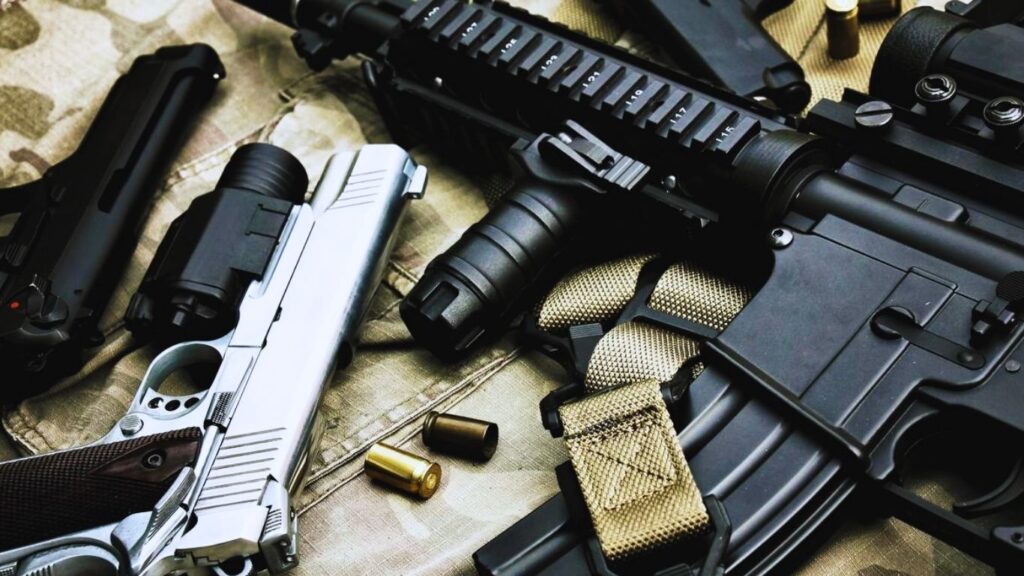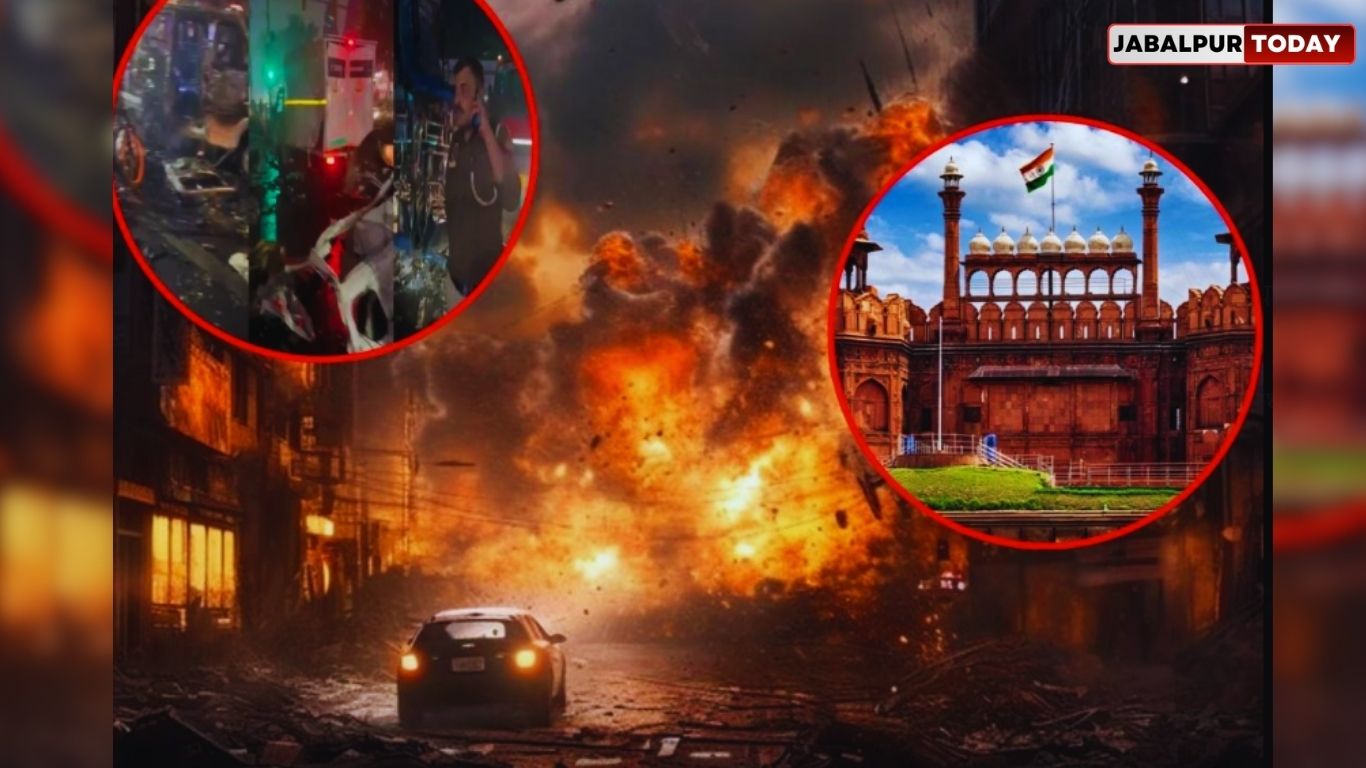A powerful explosion near Delhi’s Red Fort left 9 dead and 20 injured. This article highlights the full story—JeM network, Faridabad hideouts, and probe updates.
New Delhi: Delhi witnessed one of its darkest evenings on November 10, when a powerful car bomb exploded near the iconic Red Fort, killing at least nine people and injuring 20 others. The terrifying blast, which shook the historic heart of Old Delhi, has been traced to a terror module linked to Jaish-e-Mohammed (JeM) and a network of radicalized doctors operating across several Indian states.
The Blast That Shook Old Delhi
The explosion happened around 6:52 PM near Gate No. 1 of the Lal Qila Metro Station at the busy Subhash Marg traffic signal in Chandni Chowk. A Hyundai i20 car (Haryana registration HR26 CE 7674) had been parked for hours near the Sunehri Masjid parking lot before it suddenly blew up, creating chaos and panic.
Eyewitnesses described a massive fireball and a deafening noise as the car burst into flames, throwing debris and glass across the road. Within seconds, the fire spread to over 20 vehicles, including two e-rickshaws and one auto-rickshaw.
Seven fire tenders rushed to the spot and brought the blaze under control by 7:29 PM. But by then, the damage was done — bodies lay scattered, cars were gutted, and Chandni Chowk had turned into a scene of devastation.
Victims and Survivors
Among the victims was Ashok Kumar, a 45-year-old bus conductor from Amroha, Uttar Pradesh, who was the sole earner for his large family. Another commuter, Lokesh Kumar Gupta, remains missing.

The injured were taken to LNJP Hospital and AIIMS Trauma Center, where several underwent surgeries for burns and metal injuries. Delhi Police confirmed nine deaths and 20 injuries by late night.
How the Attack Happened
CCTV footage shows that the car had been parked at the site since 3:19 PM — with a man inside who never got out. Investigators believe it was Dr. Umar Mohammad, a 32-year-old doctor from Pulwama, Jammu & Kashmir.
The car’s ownership changed hands multiple times — from Mohammad Salman (arrested in Gurugram), to Devender, then Tariq, and finally Umar. Police suspect that Umar panicked after hearing of his associates’ arrests earlier in the day and triggered the IED manually, likely dying in the blast himself. DNA tests are being conducted on remains found at the site.
The “White-Collar” Terror Network
What makes this attack particularly shocking is the profile of the people involved. Investigators have uncovered a “white-collar” terror module — a group of educated professionals, including doctors, who had been radicalized online and were working secretly for Jaish-e-Mohammed (JeM) and Ansar Ghazwat-ul-Hind.

Those arrested include Dr. Muzammil Ahmad Ganai, Dr. Adeel Majeed Rather, Dr. Mujammil Shakeel, and Dr. Adil Rather — all from Jammu & Kashmir. They allegedly rented safe houses in Faridabad under fake names to store huge quantities of explosives disguised as “medical chemicals.”
Massive Explosives Seized in Faridabad
Just hours before the Red Fort blast, a joint team of J&K and Haryana Police raided two rented houses in Faridabad, leading to one of India’s biggest terror seizures.

From a house in Dhoj village, police recovered 350-360 kg of ammonium nitrate, 20 battery-powered timers, 24 remotes, electric wiring, and walkie-talkies.
Another site in Fatehpur Taga village, just 4 km away, yielded 2,563 kg more of explosives, along with an AK-47 rifle, Beretta pistol, AK-56 rifle, and ammunition.
In total, authorities seized over 2,900 kg of bomb-making materials — enough to cause multiple major explosions across India.
Investigation and Security Measures
A case under UAPA Sections 16 and 18, the Explosives Act, and the Bharatiya Nyaya Sanhita (BNS) has been registered at Kotwali Police Station.
A multi-agency probe is now underway, led by Delhi Police Special Cell, NIA, IB, UP ATS, and Haryana Police. Forensic teams are analyzing samples from the blast site, while mobile data, CCTV footage, and call records are being used to map the entire network.
Following the attack, Lal Qila Metro Station and the Red Fort have been closed for three days.
High alerts have been issued in Delhi-NCR, Uttar Pradesh, Maharashtra, Bihar, Mumbai, and Jammu (Vaishno Devi). Security has been tightened at markets, religious sites, and railway stations nationwide.
Leaders React and Nation Mourns
Prime Minister Narendra Modi, who was en route to Bhutan, expressed deep grief: “Pained beyond words by the tragic incident in Delhi. The affected are being assisted on priority.”
Union Home Minister Amit Shah visited the blast site and LNJP Hospital, meeting families of victims and assuring a “full and fast investigation.”
Delhi Police Commissioner Satish Golcha confirmed that the car was “slow-moving with occupants inside” and announced a city-wide high alert.
President Droupadi Murmu called the attack “deeply saddening,” while Rahul Gandhi and Arvind Kejriwal demanded a review of security measures.
Internationally, countries including the US, UK, France, Japan, Iran, and Russia condemned the attack and offered assistance. The US State Department also issued a travel advisory for its citizens in Delhi.
Meanwhile, PIB clarified that viral videos claiming to show the blast were fake — they were old clips from the 2024 Beirut explosion.
Also Read: Red Fort Car Explosion: Fire Engulfs Shops Near Delhi Metro Station, Multiple Injuries
A Larger Plot Foiled
Officials believe the Faridabad raids prevented an even bigger attack planned for central Delhi. The discovery of thousands of kilos of explosives and advanced detonation devices suggests a wider terror conspiracy that could have caused mass casualties.
Authorities are continuing raids in Jammu & Kashmir, Uttar Pradesh, and Gujarat, with multiple arrests already made.
The Way Forward: Staying Strong and Alert
While the Red Fort blast has left Delhi shaken, the massive seizure of explosives has also saved countless lives. As the investigation unfolds, the government urges citizens to stay alert and united against terror.
“India stands strong,” said Home Minister Amit Shah. “We will not rest until this network is destroyed completely.”
The nation mourns its loss — but also stands firm, determined to turn grief into vigilance and resilience.




